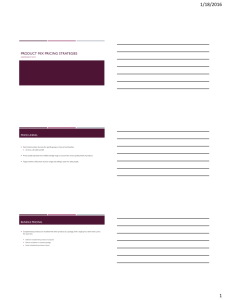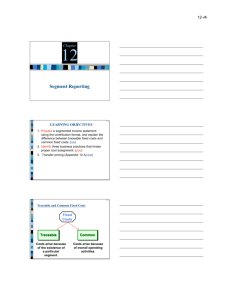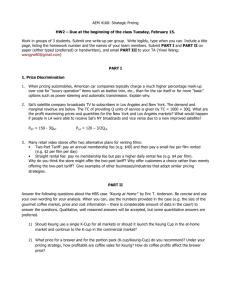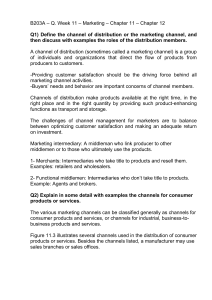Pricing Strategies, Parts 5-7
advertisement
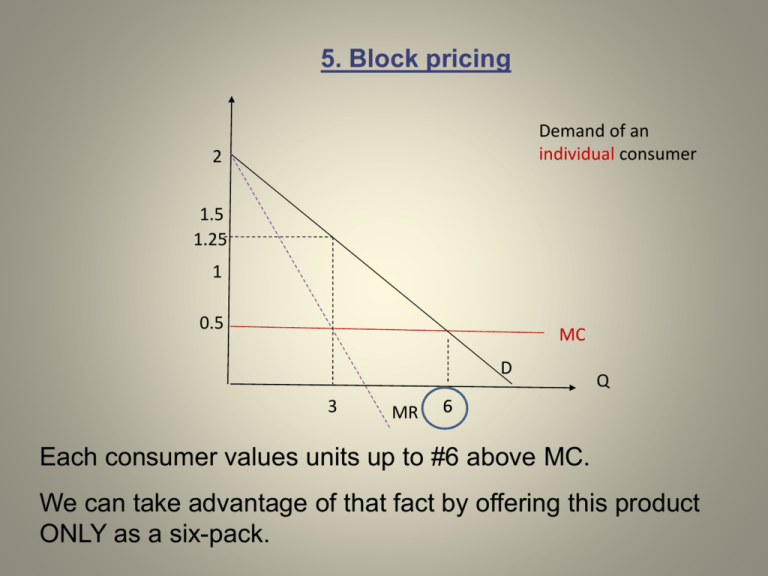
5. Block pricing Demand of an individual consumer 2 1.5 1.25 1 0.5 MC D 3 MR Q 6 Each consumer values units up to #6 above MC. We can take advantage of that fact by offering this product ONLY as a six-pack. Pricing the 6-pack: A customer would pay: Up to $1.75 for the first unit; Up to $1.50 for the second; Up to $1.25 for the third; Up to $1.00 for the fourth; Up to $0.75 for the fifth; Up to $0.50 for the sixth. (units after #6 are not worth producing) Total value consumer places on a six-pack is $6.75. That is the price we should charge. 5. Block pricing 2 1.5 1.25 1 0.5 MC D 3 MR Q 6 Profit under block pricing and under regular pricing 6. Two-part pricing P Demand of an individual consumer 60 35 MC 10 D 10 MR Q 20 Under ‘regular’ pricing: The profit-maximizing point is P = $35, Q = 10, Π = $250 6. Two-part pricing P Demand of an individual consumer 60 35 MC 10 D 10 MR Q 20 A better idea: Charge the same price + add a one-time fee equal to consumer’s CS from purchase 6. Two-part pricing P Demand of an individual consumer 60 35 MC 10 D 10 MR Q 20 An even better idea: lower the per-unit price (P=MC=$10) and keep charging the fee (which will now be larger). As a result, you would get more profit. The i-Phone case Prices are falling over time – WHY? Possible explanations: - Obsolescence – Better products developed – demand drops - More firms enter – stronger competition – profit margin drops - More efficient production technologies developed – production costs drop – price drops - “Intertemporal price discrimination”, or separating customers across time, based on their patience factor $ Demand from all the consumers who will ever want your product MC Q $ Demand from all the consumers who will ever want your product MC Q You could satisfy them all at once… $ July June May April Demand from all the consumers who will ever want your product MC Q … or, you could serve them one group at a time, starting with those who value the good the most $ Demand from all the consumers who will ever want your product MC Q

